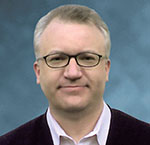Bill Siwicki
AI & ML Intelligence
Generative AI and other technologies can help ease the clinician shortage by augmenting the work of doctors and nurses and offering significant outcomes, says Accenture Health Strategy Lead Brian P. Kalis.
Remote Patient Monitoring
As one telemedicine CEO looks to the year ahead, he predicts RPM will improve outcomes for congestive heart failure patients and help manage those on the wildly popular GLP-1 diabetes and weight loss medications.
A health IT CEO offers his view of the next year in healthcare and technology, pointing to AI's true transformative power operating quietly in the background and mounting pressure for providers to reassess their digital investments.
The success the health system has had with its real-time analytics monitoring platform, RAMP, is the focus of an artificial intelligence-themed session at HIMSS25 in March.
Computer vision and sensor integration, evolution in virtual specialty care and other innovations are transcending the hype cycle and showing results, says one telehealth leader.
Advanced approaches will improve health systems' bottom lines while enabling a "more patient-centered and provider-friendly healthcare ecosystem," says one consultant who specializes in data management.
One CEO offers a closer look into the various technologies at work, including RTLS and artificial intelligence, and he offers some stats on smart room implementations.
Vijayashree Natarajan, SVP and head of technology at Omega Healthcare, predicts these three areas of health IT will be key next year – and explains why.
In one HIMSS25 session, three speakers from Froedtert & MCW will discuss how ML models can forecast future hospital capacity needs by analyzing large datasets, including historical patient admissions, discharge trends and much more.
Conversations have only started in the past few years about what digital equity is and how it applies to telemedicine and virtual care. Here's what the Detroit-based health system has learned so far.










